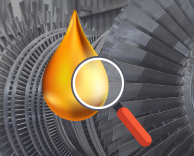13 Essential Test Parameters for Turbine Oil: Ensuring Optimal Performance
Introduction
Various applications associated with turbines are required for the smooth operation of the turbine oil. Functioning and testing of turbine oil will provide reliability, efficiency, and the vitality of the equipment. Turbine oil is a critical fluid that should be tested regularly to maintain superior performance. In this article, we discuss the 13 main test parameters for turbine oil, their relevance, and some best practices for turbine oil performance.
Need for Turbine Oil Testing
Turbine oils experience some of the toughest conditions known: high temperature, pressure, and contamination. Regular testing ensures:
- Prolonged equipment life
- Lowered downtime and servicing Expenditure
- Maximum performance with safety
- Identify Problems Early
13 Important Test Parameters for Turbine Oil
3.1 Viscosity
There is a factor that indicates the flow resistance of oil, meaning its viscosity. Maintaining the right viscosity is essential for proper lubrication and wear reduction.3.2 Viscosity Index
Viscosity index is a measure of how much the oil viscosity changes with temperature. A high index is indicative of good temperature performance of the oil.
3.3 Flash Point
Normal flash point is the temperature at which the oil gives off sufficient vapor to ignite. It makes you safe by knowing the possible fire hazard.
3.4 Pour Point
The pour point is the lowest temperature limit for the oil when it becomes a solid or semi-solid. That important to keep turbines operating in colder climates.
3.5 Demulsification
Demulsibility indicates the capacity of the oil to separate water from the emulsion. Demulsification must be efficient to protect from water damage.
3.6 Copper Corrosion
This test is used to measure the oil's ability to rust copper parts. This is important for the integrity of machinery.
3.7 Acid Number
The acid number indicates the acidity level of an oil. At high levels, acidity tells you that something is oxidizing and degrading, which can be detrimental to equipment.
3.8 Foam Characteristics
Foam cannot allow proper lubrication → damage to control itself. It denotes the foaming tendency and stability of the oil.
3.9 Oxidation Characteristics
The TOST test: This test measures the ability of the oil to withstand oxidation in high-temperature environments. Helps in predicting how long the oil lasts.
3.10 Water Separation
Good water separation guarantees that water impurities will not reduce the performance of the oil or cause damage to the equipment.
3.11 Rust Prevention
Rust is capable of causing extensive equipment damage. This is a test that measures how well the oil can help protect against rust.
3.12 Cleanliness
Cleanliness prevents oil from contaminants that can wear out equipment parts.
3.13 Oxidation Stability Test (TOST)
TOST (Turbine Oil Oxidation Stability Test) tests the oil for resistance to degradation due to water contamination, high temperatures, and air entrainment. It gives a good measure of oil life.
What is ASTM D943: Turbine Oil Oxidation Stability Test?
A well-known test for turbine oil oxidation stability is ASTM D943 (also known as TOST). This test:
- Provides a simulation of real-world conditions
- Assesses oxidation resistance
- Predicts how long the oil will last in operation
Steam Turbine Lubrication Best Practices:
1.Oil contaminants decrease oil effectiveness and may cause equipment failures; thus, keep oil clean, cool, and dry.
2.Use High-Efficiency Breathers: Prevent moisture and dirt ingress into the oil tanks.
3. Keep Track of Bearing Oil Temp: Elevated temperatures can lead to quicker oil deterioration.
4. Foaming and Air Entrainment: Since foam reduces lubrication efficiency, inspect for foaming.
5. Install Primary and Secondary Sampling Points: They were used to monitor consistent sampling.
6. Conduct Routine Oil Analysis: Identify early indications of contamination and degradation.
7. Sight glasses: Regular inspection of the foam, water, and oil level in the sight glass.
8. Dry Headspace: Use blowers or instrument air to blow out moisture.
9. Draining Water from Pooled Water: With repeated drainage of water, reduce the contamination of water.
10.Utilize Non-Online Fluid Conditioning: Improve the quality of the oil by separating the contaminants.
11.Look for Varnish: Be sure to inspect gas turbines that are susceptible to varnish formation.
12.Wash-Down Protection: Prevents water and detergent from entering.
13.Inspect Bulk Oil Deliveries: Test New Oil For Contamination Before Accepting Bulk Oil Deliveries
The Role of Regular Maintenance and Oil Analysis
A Little Maintenance Goes A Long Way and Oil Analysis
Turbine operation is only successful if it is based on regular maintenance and oil analysis. With a proper program, industries can:
Spot Early Warning Signals: Oil analysis can measure contaminants, wear debris, and degradation products, indicating problems long before they become serious threats.
Minimize Downtime: It avoids unplanned shutdowns by taking preventive measures to prevent them before they occur, allowing you to continue working.
Optimize Equipment Efficiency: Pure, clean, and well-treated oil provides better lubrication, preventing friction and helping the turbine to work efficiently.
Increase Equipment Lifespan: Routine maintenance and testing help to prevent corrosion, wear, and oxidation that reduce the useful life of critical equipment components.
Enhance Safety: By proactively recognizing and minimizing risks like foaming, contamination, etc., the chances of equipment failure and safety-related incidents will decrease.
Reduces Maintenance Cost: By avoiding a catastrophic failure and reducing oil changes, you save money with periodic analysis.
A complete oil analysis program consists of:
- Viscosity, acidity, cleanliness, and water content test
- Detecting wear metals and oxidation products
- Monitoring conditions of the oil and equipment by establishing a trend analysis over time
Maintenance schedules should include:
- Regular checks of oil levels, filter, and reservoirs.
- Cleaning filters and replacing them on an as-needed basis.
- Providing suitable 3D spacing formation so as to prevent leakages and contamination.
Conclusion
For different turbine operations, the efficiency, reliability, and safety depend on how the turbine oil is tested. Tracking these 13 test parameters, following best practices, and conducting routine maintenance can help industries ensure optimal turbine performance. Use these tips to protect your equipment and maximize your productivity.
Learn more about Minimac Systems' services and industry insights by visiting our official LinkedIn page.





